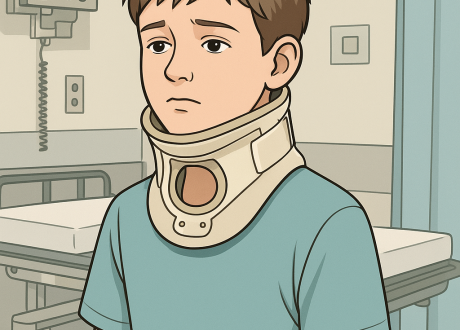 JAMA: The Journal of the American Medical Association
JAMA: The Journal of the American Medical Association
TAKE-HOME MESSAGE
- In this study, the authors detailed the updated criteria for pediatric sepsis and septic shock developed and validated by the Society of Critical Care Medicine international task force. Using the novel Phoenix Sepsis Score, the authors showed that dysfunction of at least one of four organ systems (respiratory, cardiovascular, neurologic, or coagulation) was associated with higher in-hospital mortality rates.
- The new Phoenix sepsis criteria have the potential to provide early identification of children at a higher risk of poor clinical outcomes in both low- and high-resource settings and guide prompt treatments and interventions.
This abstract is available on the publisher's site.
IMPORTANCE
Sepsis is a leading cause of death among children worldwide. Current pediatric-specific criteria for sepsis were published in 2005 based on expert opinion. In 2016, the Third International Consensus Definitions for Sepsis and Septic Shock (Sepsis-3) defined sepsis as life-threatening organ dysfunction caused by a dysregulated host response to infection, but it excluded children.
OBJECTIVE
To update and evaluate criteria for sepsis and septic shock in children.
EVIDENCE REVIEW
The Society of Critical Care Medicine (SCCM) convened a task force of 35 pediatric experts in critical care, emergency medicine, infectious diseases, general pediatrics, nursing, public health, and neonatology from 6 continents. Using evidence from an international survey, systematic review and meta-analysis, and a new organ dysfunction score developed based on more than 3 million electronic health record encounters from 10 sites on 4 continents, a modified Delphi consensus process was employed to develop criteria.
FINDINGS
Based on survey data, most pediatric clinicians used sepsis to refer to infection with life-threatening organ dysfunction, which differed from prior pediatric sepsis criteria that used systemic inflammatory response syndrome (SIRS) criteria, which have poor predictive properties, and included the redundant term, severe sepsis. The SCCM task force recommends that sepsis in children be identified by a Phoenix Sepsis Score of at least 2 points in children with suspected infection, which indicates potentially life-threatening dysfunction of the respiratory, cardiovascular, coagulation, and/or neurological systems. Children with a Phoenix Sepsis Score of at least 2 points had in-hospital mortality of 7.1% in higher-resource settings and 28.5% in lower-resource settings, more than 8 times that of children with suspected infection not meeting these criteria. Mortality was higher in children who had organ dysfunction in at least 1 of 4-respiratory, cardiovascular, coagulation, and/or neurological-organ systems that was not the primary site of infection. Septic shock was defined as children with sepsis who had cardiovascular dysfunction, indicated by at least 1 cardiovascular point in the Phoenix Sepsis Score, which included severe hypotension for age, blood lactate exceeding 5 mmol/L, or need for vasoactive medication. Children with septic shock had an in-hospital mortality rate of 10.8% and 33.5% in higher- and lower-resource settings, respectively.
CONCLUSIONS AND RELEVANCE
The Phoenix sepsis criteria for sepsis and septic shock in children were derived and validated by the international SCCM Pediatric Sepsis Definition Task Force using a large international database and survey, systematic review and meta-analysis, and modified Delphi consensus approach. A Phoenix Sepsis Score of at least 2 identified potentially life-threatening organ dysfunction in children younger than 18 years with infection, and its use has the potential to improve clinical care, epidemiological assessment, and research in pediatric sepsis and septic shock around the world.









